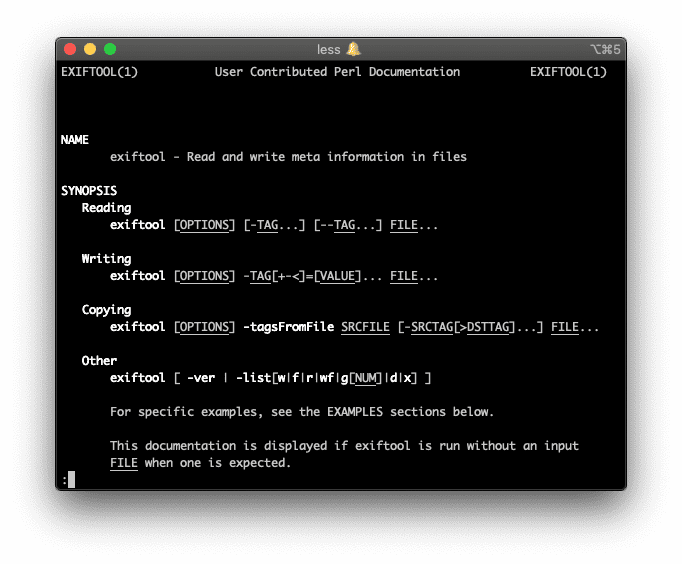

Units are decimal degrees, true (not magnetic). degreesType: Used for bearing, heading, course.A usually contains latitude, longitude, elevation, and time values, like this one from a Columbus V 1000 device:Īs shown in the specification, lots more information can be reported inside a including: Typically, most GPS devices support output of a track in GPX format.
#EXIFTOOL GEOTAG FULL#
You can read more in the GPX docs here or the full schema here. GPX (the GPS Exchange Format) is a light-weight XML data format for the interchange of GPS data (waypoints, routes, and tracks). It’s particularly useful for when you’re using a secondary GPS device, like a phone, in addition to your camera ( which might be significantly less accurate than an external device). One of the great features of exiftool is its ability to geotag a sequence with a GPX track. Knowing this, we can then simply iterate the SubSecDateTimeOriginal for each photo in the sequence by +0.2 seconds to assign a SubSecDateTimeOriginal to each. It’s fair to assume the first frame extracted inherits the first GPS point (time, latitude, longitude…) from the video telemetry. In this case you have a photo every 0.2 seconds. Let’s imagine a camera is shooting a video at 5 frames per second (a common framerate for Google Street View camera modes). SubSecDateTimeOriginal = 2020:04:13 15:37:22.444įor videos these values are important.The values for these fields look like this: However, the EXIF standard also supports two other useful time fields ( SubSecTimeOriginal and SubSecDateTimeOriginal). Using SubSecDateTimeOriginalĬamera manufacturers often write photo data time to the DateTimeOriginal metadata field (to second resolution, when not in high framerate timelapse modes). This post aims to share the lessons I’ve learned in the intervening 8 months.

As I have come to learn there’s often many other things to be aware of. In that previous, the process of geotagging is somewhat simplistic. It’s a process that’s useful for when you’re uploading or viewing 360 content, for example, to Mapillary, that doesn’t accept video.
#EXIFTOOL GEOTAG HOW TO#
I’ve talked previously about creating frames (photos) from video files and how to inject a GPS track log.

I use exiftool, a nifty metadata manipulation tool to fix timezones (and geotag as well).Exiftool is a powerful bit of software for geotagging photos, understanding how the process works will save you a few headaches.
#EXIFTOOL GEOTAG ANDROID#


 0 kommentar(er)
0 kommentar(er)
